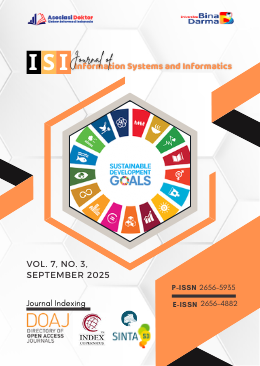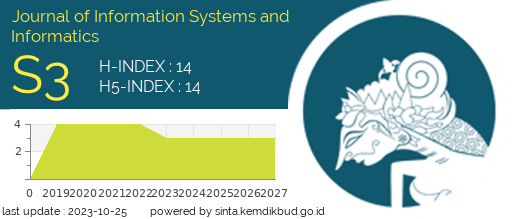Challenges In Implementing Integrated Electronic Health Records (EHRS) in Namibia’s Public Health Sector
Abstract
The study was aimed at investigating the challenges of implementing integrated Electronic Health Records (EHR) in the Namibian Public Health Care Sector. The study employed qualitative research approach. An exploratory design was used in this study to engage IT Personnel. The study used the purposive sampling technique to select twenty respondents, particularly focusing on the IT department. The study discovered that the Ministry of Health and Social Services (MoHSS) have isolated Electronic Health Record Systems (EHRS) such as the DHIS2 and Ptracker. The MoHSS had attempted to implement integrated EHRS, however it experienced various challenges. This study discovered challenges such as lack of network infrastructure, computer literate personnel, inadequate IT personnel, lack of policies and project documentation to implement the health records. Another challenge that hindered the addressing of issues such as supply of all up-to-date computer devices and software; having proper filing system and improving the slow connection due to poor network infrastructures is budget constraints. The study further discovered a lack of interoperability and standardization, the absence of unique identifiers for patients and the lack of data warehousing to be the main barriers for the full implementation of the integrated electronic health records system. Some of the recommendations of the study are that the MoHSS develops national policies and implementation frameworks to guide the implementation of EHRS, secure adequate funds specifically for the implementation of EHRS, develops and implements training framework for IT staff, administrative and health professional, implements unique patient identifier system and utilize open standards to enable system interoperability for implementation of the e-Health Record System. The study also recommends that MoHSS consider partnering with private service providers to enter into network infrastructure sharing agreements.
Downloads
References
A. Boonstra, A. Versluis, and J. F. J. Vos, “Implementing electronic health records in hospitals: A systematic literature review,” BMC Health Serv Res, vol. 14, no. 1, Sep. 2014, doi: 10.1186/1472-6963-14-370.
I. Keshtar and Odeh Amar, “Security and privacy of electronic health records: Concerns and challenges,” Egyptian Informatics Journal, vol. 22, no. 2, pp. 177–183, Jul. 2021.
J. A. Casey, B. S. Schwartz, W. F. Stewart, and N. E. Adler, “Using Electronic Health Records for Population Health Research: A Review of Methods and Applications,” Annu Rev Public Health, vol. 37, pp. 61–81, Mar. 2016, doi: 10.1146/annurev-publhealth-032315-021353.
T. E. C. M. G. A. and P. H. Niazkhani Zahra, “Barriers to patient, provider, and caregiver adoption and use of electronic personal health records in chronic care: a systematic review,” BMC Medical Informatics and Decision Making, 2020, Accessed: Sep. 01, 2024, doi:10.1186/s12911-020-01159-1
A. P. Koumamba, U. J. Bisvigou, E. B. Ngoungou, and G. Diallo, “Health information systems in developing countries: case of African countries,” BMC Med Inform Decis Mak, vol. 21, no. 1, Dec. 2021, doi: 10.1186/s12911-021-01597-5.
Karon Ronald, “Utilisation of Health Information Systems for Service Delivery in the Namibian Environment,” in Maximizing Healthcare Delivery and Management through Technology Integration, IGI Global, 2016, ch. 11, pp. 169–183.
I. Smith, “Organizational quality and organizational change: Interconnecting paths to effectiveness,” Library Management, vol. 32, no. 1/2, pp. 111–128, 2011, doi: 10.1108/01435121111102629
M. I. Kapepo1 and S. Yashik, “A process analysis of the Namibian Health System: An exploratory case study,” Ethiopian Journal of Health Development, vol. 32, no. 4, pp. 200–209, 2018, Accessed: Jul. 15, 2025.
L. Machacha, M. Kanjadza, and B. Kumari, “The Use and Adoption of HIS and EMR in Botswana,” pp. 164–167, 2017.
Nomusa Dlodlo and Suama Hamunyela, “The Status of Integration of Health Information Systems in Namibia,” The Electronic Journal Information Systems Evaluation, vol. 20, no. 2, pp. 61–75, 2017, Accessed: Aug. 23, 2024.
H. Ghalavand, S. Shirshahi, A. Rahimi, Z. Zarrinabadi, and F. Amani, “Common data quality elements for health information systems: a systematic review,” Dec. 01, 2024, BioMed Central Ltd. doi: 10.1186/s12911-024-02644-7.
W. J. Creswell, Research design: Qualitative, quantitative and mixed methods. London: Sage Publications Inc., 2013.
Namibia Statistics Agency, “The Namibia Labour Force Survey 2018 Report,” Windhoek, Mar. 2019.
S. Campbell et al., “Purposive sampling: complex or simple? Research case examples,” Journal of Research in Nursing, vol. 25, no. 8, pp. 652–661, Dec. 2020, doi: 10.1177/1744987120927206.
M. DeJonckheere and L. M. Vaughn, “Semistructured interviewing in primary care research: A balance of relationship and rigour,” Fam Med Community Health, vol. 7, no. 2, Mar. 2019, doi: 10.1136/fmch-2018-000057.
K. Wangdi, H. Sarma, J. Leaburi, E. McBryde, and A. C. A. Clements, “Evaluation of the malaria reporting system supported by the District Health Information System 2 in Solomon Islands,” Malar J, vol. 19, no. 1, Dec. 2020, doi: 10.1186/s12936-020-03442-y.
UNAIDS, “Data for impact: How UNAIDS data is guiding the world to end AIDS. Joint United Nations Programme on HIV/AIDS,” Nov. 2022. Accessed: Jul. 15, 2025.
UNAIDS, “Developing and Using Individual Identifiers for the Provision of Health Services including HIV,” Montreux, Switzerland, Feb. 2009. Accessed: Aug. 26, 2024.
S. Kataria and V. Ravindran, “Electronic Health Records: A Critical Appraisal of Strengths and Limitations,” Journal of the Royal College of Physicians of Edinburgh, vol. 50, no. 3, Sep. 2020.
Christiane Brems, Mark E. Johnson, Teddy D. Warner, and Laura Weiss Roberts, “Barriers to healthcare as reported by rural and urban interprofessional providers,” J Interprof Care, vol. 20, no. 2, pp. 105–118, Jul. 2006.
C. T. Nengomasha, R. Abankwah, W. Uutoni, and Pazvakawambwa Lilian, “Health information systems in Namibia,” Information and Learning Sciences, vol. 119, no. 7/8, pp. 358–376, Aug. 2018.
H. D. Mugauri et al., “A decade of designing and implementing electronic health records in Sub-Saharan Africa: a scoping review,” Glob Health Action, vol. 18, no. 1, Apr. 2025, doi: 10.1080/16549716.2025.2492913.
CGI, “An Introduction to Health Information Integration,” 2014. Accessed: Aug. 23, 2024.
A. Bisrat, D. Minda, B. Assamnew, B. Abebe, and T. Abegaz, “Implementation challenges and perception of care providers on Electronic Medical Records at St. Paul’s and Ayder Hospitals, Ethiopia,” BMC Med Inform Decis Mak, vol. 21, no. 1, Dec. 2021, doi: 10.1186/s12911-021-01670-z.
A. P. Koumamba, U. J. Bisvigou, E. B. Ngoungou, and G. Diallo, “Health information systems in developing countries: case of African countries,” BMC Med Inform Decis Mak, vol. 21, no. 1, Dec. 2021, doi: 10.1186/s12911-021-01597-5.
L. van Dyk, “A review of telehealth service implementation frameworks,” Int J Environ Res Public Health, vol. 11, no. 2, pp. 1279–1298, Jan. 2014, doi: 10.3390/ijerph110201279.
D. Luna, A. Almerares, J. C. Mayan, F. G. B. de Quirós, and C. Otero, “Health Informatics in developing countries: Going beyond pilot practices to sustainable implementations: A review of the current challenges,” 2014, Korean Society of Medical Informatics. doi: 10.4258/hir.2014.20.1.3.
 Abstract views: 25 times
Abstract views: 25 times Download PDF: 19 times
Download PDF: 19 times
Copyright (c) 2025 Journal of Information Systems and Informatics

This work is licensed under a Creative Commons Attribution 4.0 International License.
- I certify that I have read, understand and agreed to the Journal of Information Systems and Informatics (Journal-ISI) submission guidelines, policies and submission declaration. Submission already using the provided template.
- I certify that all authors have approved the publication of this and there is no conflict of interest.
- I confirm that the manuscript is the authors' original work and the manuscript has not received prior publication and is not under consideration for publication elsewhere and has not been previously published.
- I confirm that all authors listed on the title page have contributed significantly to the work, have read the manuscript, attest to the validity and legitimacy of the data and its interpretation, and agree to its submission.
- I confirm that the paper now submitted is not copied or plagiarized version of some other published work.
- I declare that I shall not submit the paper for publication in any other Journal or Magazine till the decision is made by journal editors.
- If the paper is finally accepted by the journal for publication, I confirm that I will either publish the paper immediately or withdraw it according to withdrawal policies
- I Agree that the paper published by this journal, I transfer copyright or assign exclusive rights to the publisher (including commercial rights)






















_1.png)












